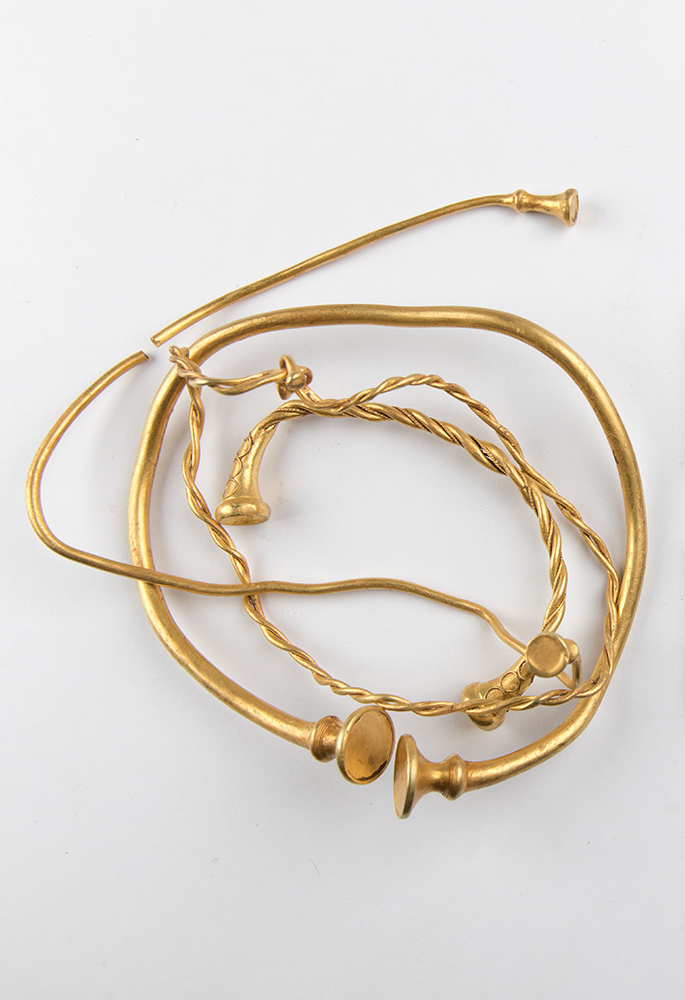Leekfrith Iron Age Gold Torcs
Unknown
- Art Funded
- 2018
- Dimensions
- 1) Torc one:14.6cm maximum diameter; weight 230.6 g 2) Torc two: 14.4cm maximum diameter; weight 42.6g3) Bracelet: 10.5cm maximum diameter; weight 35.1g, 4) Torc in two parts: 27.6cm maximum length; weight 63.2g
- Vendor
- Department of Culture Media & Sport
These four finely made torcs are thought to be the earliest Iron Age gold items ever found in Britain.
Two metal detectorists discovered the hoard of three necklaces and a bracelet in a field in Leekfrith, Staffordshire, in 2016. The items were buried close to the surface and about one metre apart.
The torcs were examined by Julia Farley, curator of British and European Iron Age collections at the British Museum, who described them as ‘a unique find of international importance’. She dated the jewellery to around 400-250BC and identified the style as Continental, suggesting the pieces may have been worn by wealthy women who had married into the local community. The gold content of the torcs is at least 80 per cent.
Two of the necklaces (one of them broken into two pieces) have plain gold loop bodies with thistle-head terminals. The third necklace is of a twisted-wire type linked by a clasp. Most important of the group is the unusual twisted bracelet, with its elaborate Celtic decoration on the terminals.
The torcs now join the archaeology collection at the Potteries Museum & Art Gallery, where they will shine new light on Staffordshire in the Iron Age.
Provenance
Discovered by metal detectorists, on land near Leekfrith, Staffordshire in 2016 with permission of the landowner. Subsequently declared Treasure.
